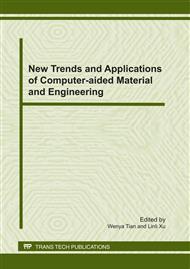p.358
p.363
p.368
p.373
p.378
p.383
p.388
p.393
p.398
Rational Scale Control Model for Construction Workers Based on Hybrid Intelligent Techniques
Abstract:
Chinese construction industry, a vital part of Chinese economy, is meaningful to absorb a large number of human resources. But with the rapid development of gross product of construction industry, labor productivity dose not increased considering construction worker as input resource. For the effective implementation of human resource policies, in this paper, based on the factor analysis theory and intelligent technology, a hybrid model of PCA and Least Squares Support Vector Machines are combined to predict the rational scale of construction workers. Relative data is collected from National Bureau of Statistics of China. Data analysis shows the proposed models, especially based on LS-SVMs, have more steady performance and higher accuracy.
Info:
Periodical:
Pages:
378-382
Citation:
Online since:
January 2011
Authors:
Keywords:
Price:
Сopyright:
© 2011 Trans Tech Publications Ltd. All Rights Reserved
Share:
Citation:


